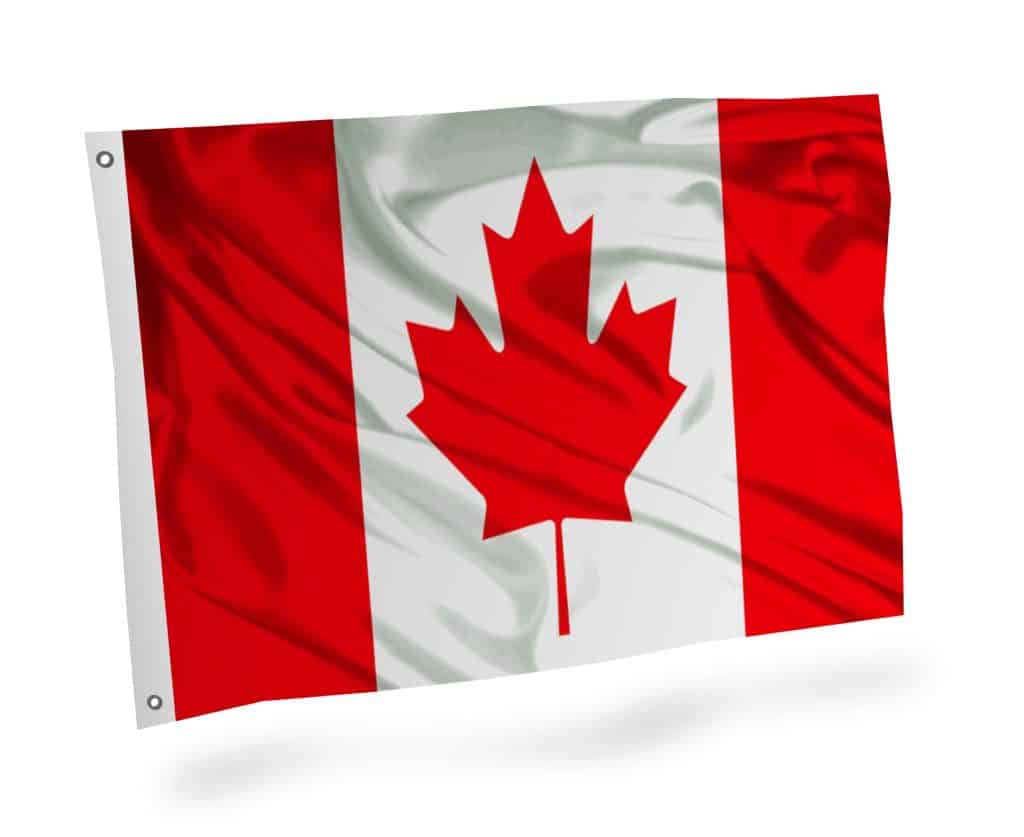The “Canada-style” flag is a flag that can generally be seen above a boat mast or above a pole installed in front of a building. It will often represent the logo and colors of a country, a company or other known symbols.
Boats must display the national flag. This allows a visual identification of his nationality of origin. Often boats will hoist more than one flag at the top of their masts. In addition to identifying the nationality, the flag can also signify the name of the boat, that of the owner or even its position or its state.
Flags intended for boats are called ensigns. In the case of boating, flags are used for recreational and decorative purposes, mainly to identify the boat or its country of origin. They are not mandatory and little used.
In the case of merchant marine vessels, icebreakers or other vessels engaged in commercial, military or supply activities, flags were once used to communicate various information. However, as the means of communication and technologies have greatly improved, the main identifications are now electronic. However, it is interesting to see what are the main elements of the international code of maritime signals. These flags represented letters and numbers, and also featured distress symbols, requests for help or other descriptions of the condition of the boat and its navigation.

Canada-style flag formats vary, but there are more popular formats.
As for flags, therefore flags intended for boats, the format will vary according to the height of the mast on which it will be installed. The formats in France that seem to be the most common are: 50 x 75 cm, 60 x 90 cm, 80 x 120 cm, 100 x 150 cm.
As for flags that are intended to be hoisted on top of poles, the most common size in Quebec is 36” wide x 24” high. The flag of Canada, meanwhile, must be represented with the proportions 2 to 1, so the width twice as large as its height.
Finally, the flag is also used during demonstrations or celebrations to brandish the colors of our national pride, our patriotism or to display messages. In this case, it will be attached to the end of a stick in order to appear above the crowd. Its format can also vary, but it is common to see a format of 72” x 48”, or 6 feet by 4 feet.
There is a whole legislation in Quebec concerning the national flag. To know everything, consult the official website.
As there are three main uses for flags (for boats, for masts and for rallies), there is a suitable finish for everyone.
So here they are:
- Flags for boats: these flags have a finishing seam on all four sides and a vertical hem is sewn on the left side.
- Flags intended for masts or poles: these flags will have a finishing seam on all four sides, a small hem sewn on the left vertical side, and in addition will be equipped with a rope and a toggle.
- Flags intended for rallies: these flags will have a finishing seam on all four sides, then a left vertical hem will be provided to accommodate the stick which will be inserted there. In order for the flag to stay in place, the hem will be closed at the top.
Note: In all cases, there may (or may not) be a finishing seam on all four sides for the three flag designs above. It has been concluded with the multiple tests carried out as well as the experiences told by the customers that a flag which has a finishing seam around the perimeter creates more resistance to the wind than a flag without seams. A flag without a finishing seam would therefore be less likely to tear in the wind than a flag with a finishing seam around the edge. So there are pros and cons to both.
This is a custom product and can be ordered upon request: Click here to contact us.